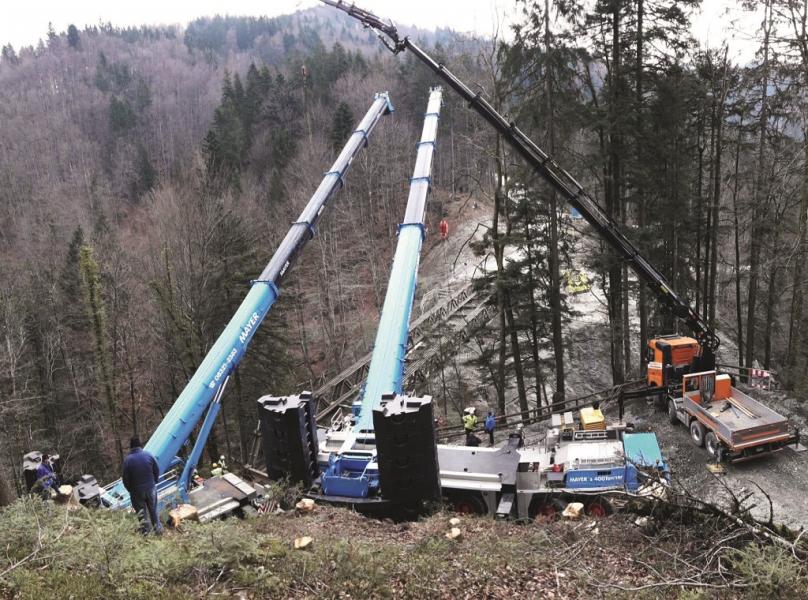Home \ International \ Tadano ATF 400G-6 to the rescue to secure a bridge on difficult terrain
Tadano ATF 400G-6 to the rescue to secure a bridge on difficult terrain
22/05/2020
Pubblicato da Redazione
The Tadano ATF 400G-6 was the obvious choice
If you want to be able to do things that nobody else can, you need a crane that can do it all. And this is exactly why there was no question for Erich Mayer when it came to adding another Tadano to his fleet. One that can tackle mountainous landscapes like the Allgäu Alps, Tirol, and Vorarlberg without a hitch, and can prove time and again why it is renowned for being such a powerhouse. So when the time came to dismantle an old bridge at risk of collapse, the ATF 400G-6 was the obvious choice.
With 18 employees across 2 sites in Allgäu, Burgberg and Kempten, Mayer Autokran-Vermietungs-GmbH has established itself as a specialist in the field of crane operations and special transportation of all kinds over the past 40 years. And as if that weren’t enough, the owner-operated company has even made a name for itself as a ski jump specialist. The company’s fleet includes several Tadano all-terrain vehicles as well as a Tadano truck-mounted crane. Mayer acquired its first Tadano at the end of the 1980s, but it wasn’t until 2011 that it added its first 400-tonner.
The ATF 400G-6 is now a firm favourite of Managing Director Erich Mayer: “The 440-tonner is a fantastic crane. Not only does it offer excellent steering and a strong drive train, but it is also compact, manoeuvrable and powerful in spite of its size. It can even be used on difficult terrain, such as that in the Damüls ski resort. 1700 metres high? No problem. And then there’s the fact that the 400-tonner offers excellent load capacities on the main boom and boom extensions. There’s just no question about it. It’s a strong piece of kit even without boom suspension system or other additional equipment. And when you put it like that, the 400-tonner is the perfect fit for our needs. Just like us, it is up for any challenge thrown at it, and it has all the makings of a top performer in its class".
A project that came through from the city of Dornbirn in Austria provided the perfect opportunity to prove Managing Director Erich Mayer right in his assessment of the ATF 400G-6, which has been part of the crane fleet for 9 years now, and the new ATF 400G-6. It was an emergency situation - a bridge measuring 44 metres long and weighing 58 tonnes, suspended above a gorge about 80 metres deep, was in danger of collapsing. Approximately 10,000 cubic metres of rock had been broken off under the bridge, and the time had come to dismantle the bridge as quickly as possible. A task such as this calls for equipment that can be relied on 100%. It has to be able to reach the site quickly and carry enough additional equipment with it without exceeding the legally permitted 12-tonne axle load. It also has to flexibly support counterweights on site and be ready for action after a short set-up time: “A special quality of the ATF 400G-6 comes in the form of its 10 counterweight variants. With a maximum of 11 tonnes per unit, the counterweights can be combined particularly flexibly, which represents an enormous advantage – especially on projects such as this. This enabled us to react very quickly to changing conditions on site,” explains Erich Mayer looking back".
The challenges began even before the actual deployment, as the access road proved to be extremely narrow. Finally on site and the challenges kept on coming, as there was limited space and huge gradients where the crane had to be set up. But nothing is impossible for a crane that is prepared for everything. Its compact design makes it particularly manoeuvrable, and with its intelligent AML crane control system, it can fully utilise the load potential at any angle of rotation, even with asymmetrical outriggers. Both 400-tonners carried out the job with a counterweight of 138 tonnes each. Due to the inclined position of the bridge and its weight, the cranes were tasked with securing the loads and preventing the bridge from swinging. This was the basis for screwing on and removing the bridge sections step by step. After about 1.5 days, the operation at the “Rappenloch” site was complete – but perhaps only temporarily, as it is not yet clear how the planned renovation at Rappenloch will continue. If one thing is certain, however, it’s that Mayer and its two ATF 400G-6s will be relied upon again.

Ultime notizie di OnSite News
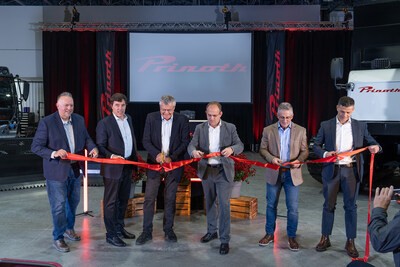
Earthmoving Machinery
25/11/2024
Prinoth Unveils Expanded Production Facility in Granby, Canada
Prinoth held an event to announce the official opening of it...

Logistics
22/11/2024
Sarens acquires additional SCHEUERLE SPMT K24 modules
renowned for its expertise in crane rental services, heavy l...
Equipments
21/11/2024
SITECH partners with Royal Engineers to create poppy and demonstrate tech offering
The demostration involved creating a ground-level poppy desi...
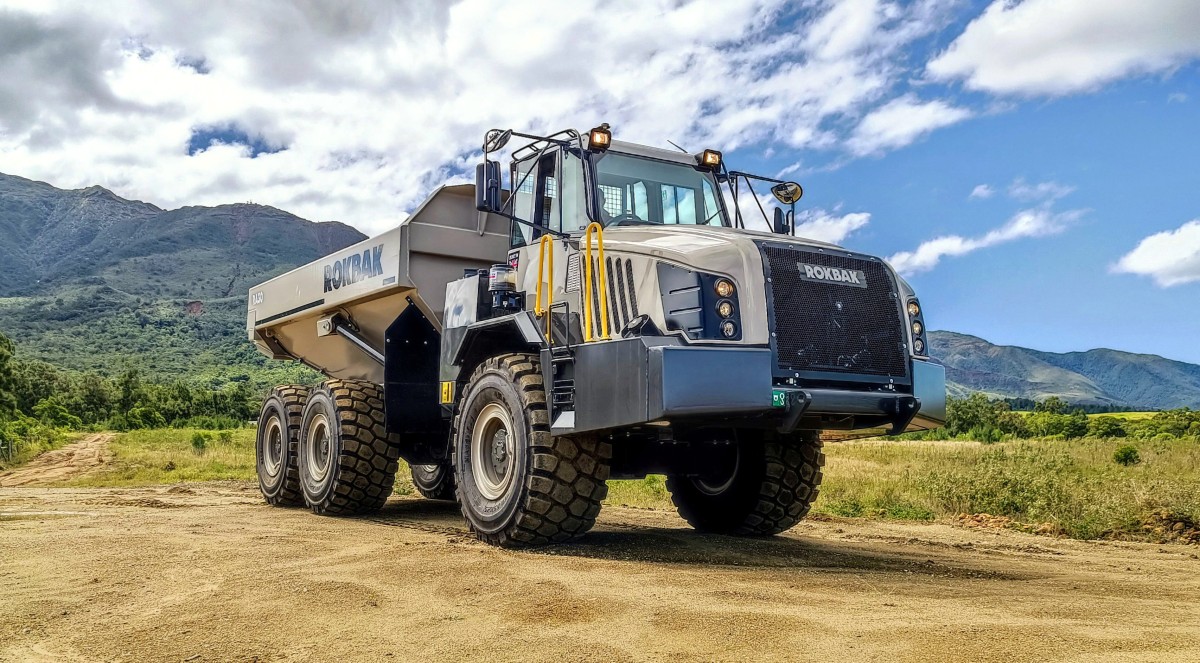
Earthmoving Machinery
20/11/2024
Strong and stable RA30 trucks carry the weight at New Caledonian mine
Three Rokbak RA30 trucks are delivering exceptional durabili...
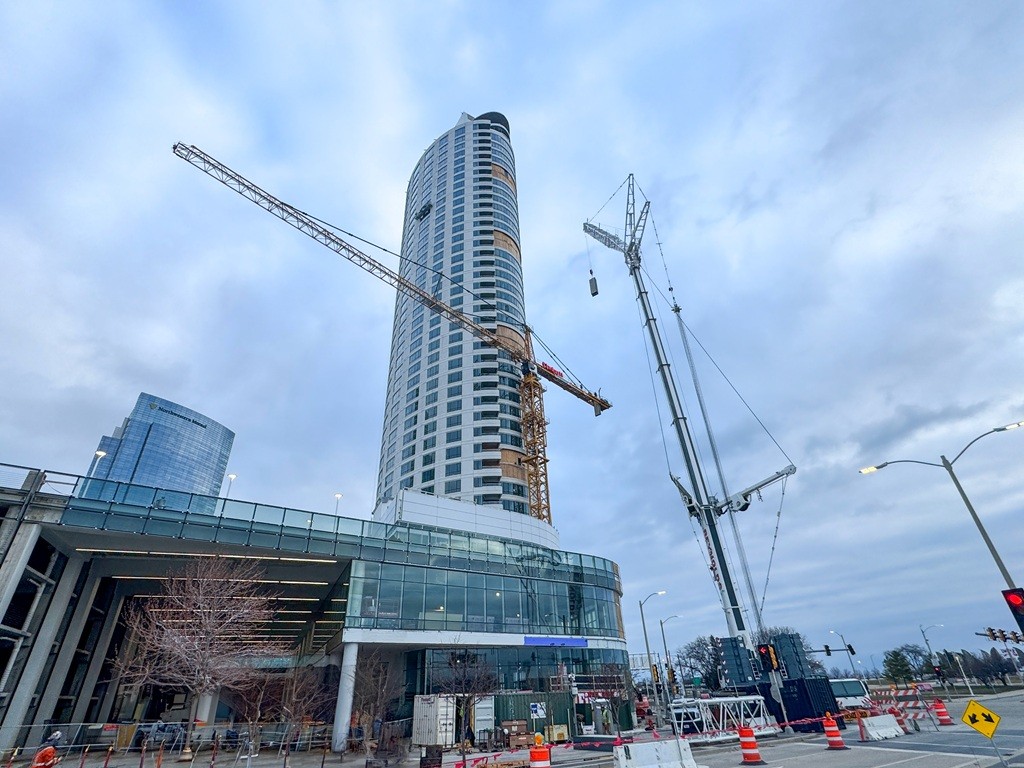
Lifting
20/11/2024
Tadano AC 7.450-1 Performs Double Duty in Wisconsin
A cost-saving and versatile solution was already on site - a...
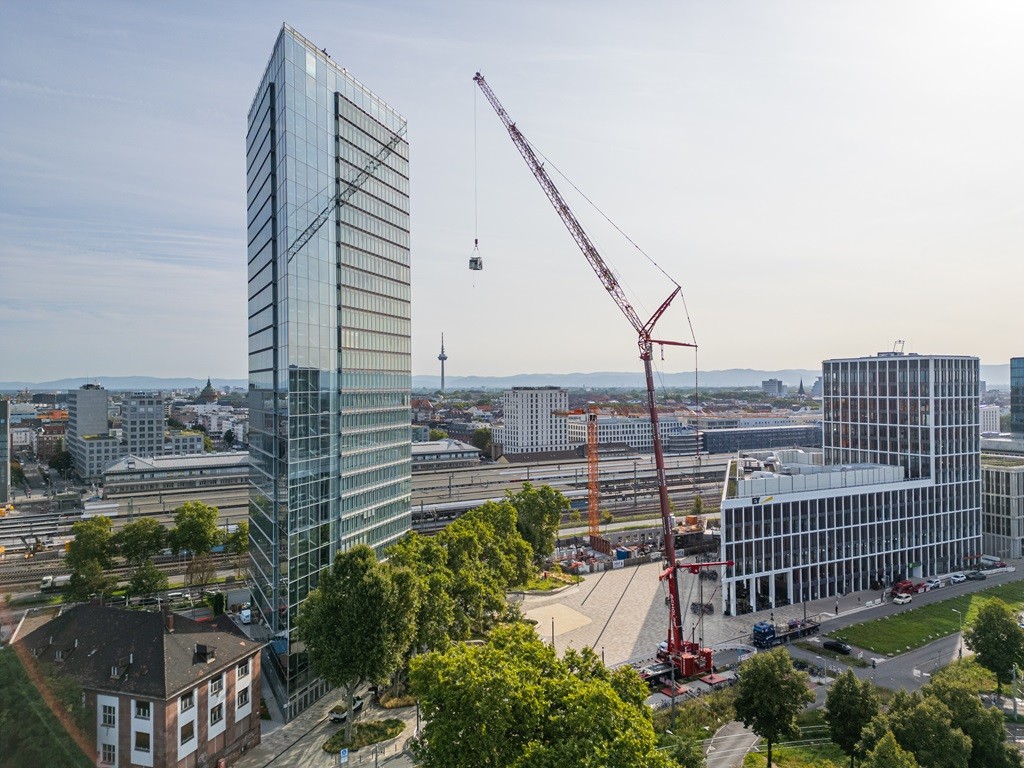
Lifting
11/11/2024
Tadano AC 7.450-1 all terrain crane for the Victoria Tower in Mannheim
Tadano AC 7.450-1 all terrain crane lifts cooling unit to to...
Altri International
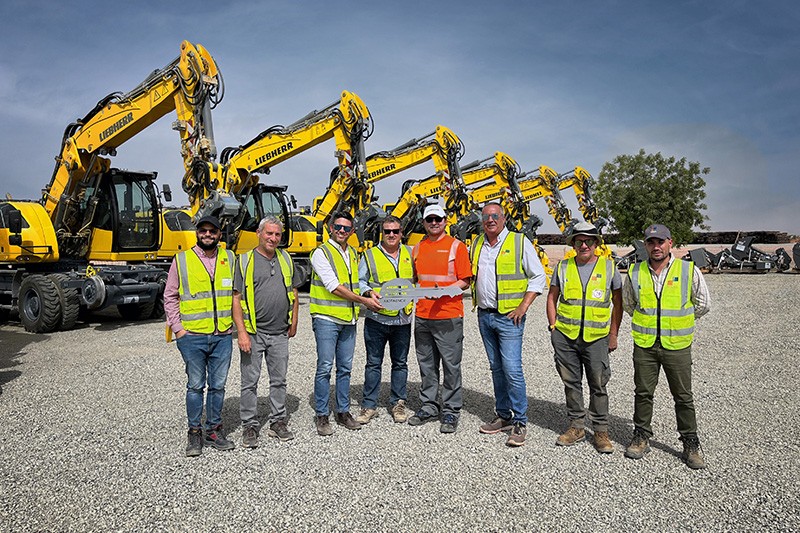
International
26/11/2024
Mota-Engil orders 10 Liebherr railroad excavators for a major project in West Africa
The Portuguese construction company Mota-Engil has once agai...
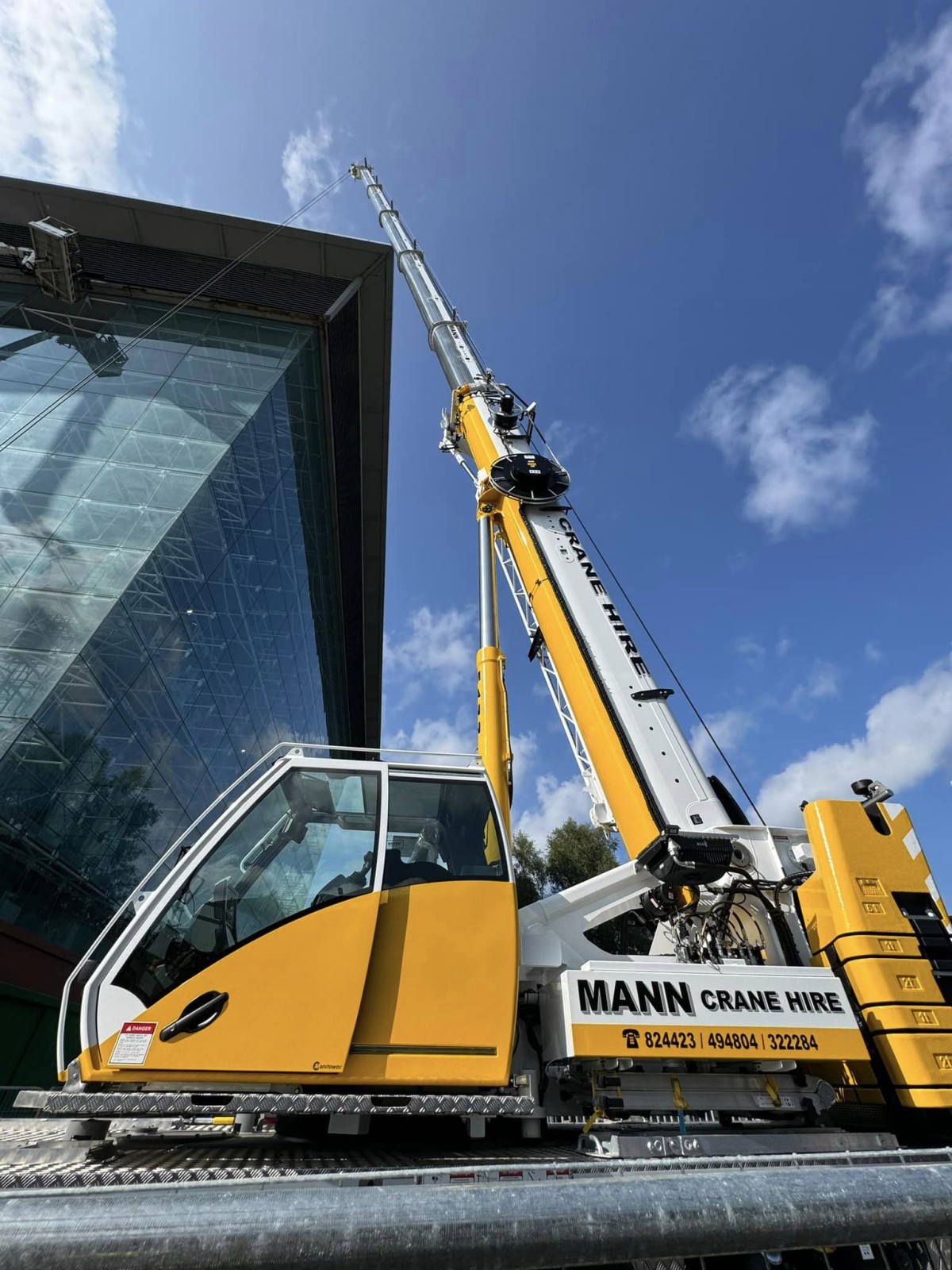
International
25/11/2024
New Grove GMK3060L-1 drives busy schedule for Mann Crane Hire
• Mann Crane Hire selected the GMK3060L-1 for its class-lead...

International
25/11/2024
Prinoth Unveils Expanded Production Facility in Granby, Canada
Prinoth held an event to announce the official opening of it...

International
23/11/2024
GPMat International takes delivery of two Raimondi T147s residential development in the South of France
- Official agent of France expands its product lineup with t...

International
22/11/2024
Sarens acquires additional SCHEUERLE SPMT K24 modules
renowned for its expertise in crane rental services, heavy l...
International
22/11/2024
Five WOLFF cranes modernize Oslo’s Ulven district
With a total of five WOLFF cranes of type 7534.16 Clear, Wol...











